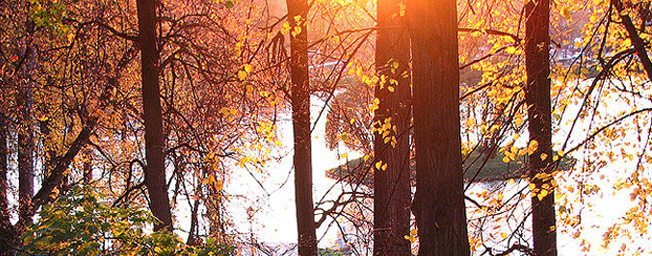Fall is upon us, and with it comes crisp air, shorter days, and my personal favorite, pumpkin flavored everything. Tonight is the Fall Equinox— one of two times a year that night and day are of equal length. In most traditions, this is cause for celebration, be it a harvest festival, an Oktoberfest, or just a day to give thanks.
Robin Rose Bennett, author of The Gift of Healing Herbs, and Healing Magic, and self-described green witch, herbalist and wisewoman, shares with us some more information about the Equinoxes, and has a few suggestions for how to acknowledge this very special Earth Holiday. The following is an excerpt from Bennett’s latest book Healing Magic: A Green Witch Guidebook to Conscious Living, 10th Anniversary Edition (on sale October 28).
Earth Holiday Rituals
There are countless national, ethnic, cultural, civic, and religious holidays/ holy days that take place around the globe and draw distinct communities together for worship or celebration. These naturally exclude all the people and communities who don’t share the same tradition. In that sense, these holidays are tribal.
There are four primary Earth holidays that could draw people of every continent together, while still retaining our unique traditions, if we are creative enough to reincorporate them on a worldwide scale into our modern, cross-cultural, global community. These are the solstices and equinoxes. Solstice means “sun (sol) stands still (stice).” It refers to the two times a year that the sun appears to stand still. Equinox means “equal (equi) nights (nox)” and refers to the two times a year when day and night are of equal length and, therefore, when light and dark are poised in perfect balance. The earth, and consequently everyone living here, revolves around the sun. Just as the moon revolves around the earth and helps unite us all psychically, the sun helps unite us physically. The solar holidays have the power to unite humanity, because whether we meet in small or large groups, in public places or at home with our families, these natural holy days are highly visible, like the sun, and belong to all of us equally.
The Earth Holidays are:
Winter Solstice (on or around December 21), which brings the spark of light in the darkness and relates to conception.
Spring Equinox (on or around March 21), which brings fragile yet powerful newborn beginnings into form, relating to birth.
Summer Solstice (on or around June 21), which brings procreative passion, and abundant growth of flowers and fruits; it relates to sexual maturity.
Fall Equinox (on or around September 21), which brings going-to-seed and gathering of the harvest, and relates to gratefully receiving and sharing the give-away.
There are a total of eight Earth holidays. The other four are called “cross-quarter days,” and fall between the equinoxes and solstices. They are: Imbolc (January 31), Beltane (April 30), Lammas (July 31), and Samhain (October 31). The cross-quarters are more complex than the solstices and equinoxes, and I will not be covering them in this book. (You can find more information about cross-quarter days in books by Starhawk, Z. Budapest, Barbara Walker, and on the Internet.) Instead, I will focus on the solstices and equinoxes, which are the most universal and accessible since they relate most obviously to specific natural events linking what we experience in our world with what’s happening in the cosmos.
Acknowledging these holidays ritually can help us get real together.
These natural, cyclical events happen at different times in the Northern and Southern Hemispheres, mirroring each other across the planet. When it is Winter Solstice in New York, it is Summer Solstice in Tahiti, and vice versa. Yet these events are still unifying, because it is like looking in a mirror across the world, at another face of yourself looking back at you, as in the diagram that follows.
At Autumn Equinox (in the west of the wheel), the sun crosses the celestial equator again, this time moving south. Day and night are of equal length once again. Plants reach maturity, final flowers bloom, final fruits ripen, and seeds are ready to share. Autumn Equinox therefore is the peak of the power of giving thanks for and gathering in the harvest. It is an opportunity to receive and share the year’s gifts/teachings/harvest in preparation for the cold, dark time to come.
This is natural, and as it should be. After Autumn Equinox, the nights will become longer than the days. All life will begin to turn inward and die.
AUTUMN EQUINOX RITUAL SUGGESTIONS
Element: Water
Colors: Blue, brown, purple, gold, rust, burgundy, russet, turquoise, and green
Smudge herbs: Grandmother Cedar leaves, sage, cronewort/ mugwort
Herbs for tea: Sassafras leaves, cronewort leaves and flowers, Ginkgo biloba leaves with hawthorn berries
Meditation: Dream, and send out your gratitude for all you have received this year. Reflect on your personal harvest.
Personal-growth question: What wisdom have I harvested, or am I harvesting, from both the joyful and painful experiences of this year?
Activity: Cook squash, beans, corn, and leafy deep-greens. Share a harvest feast together.
